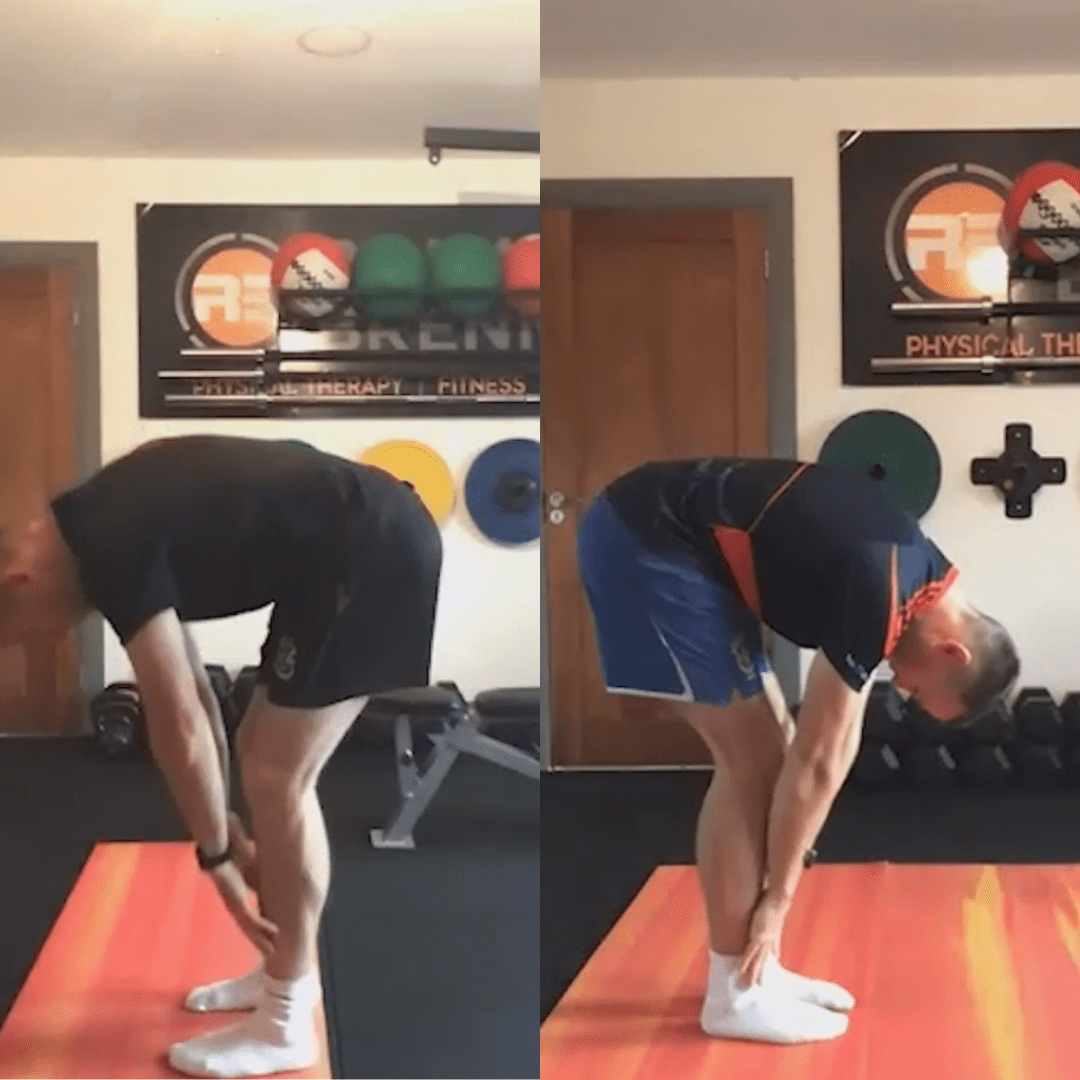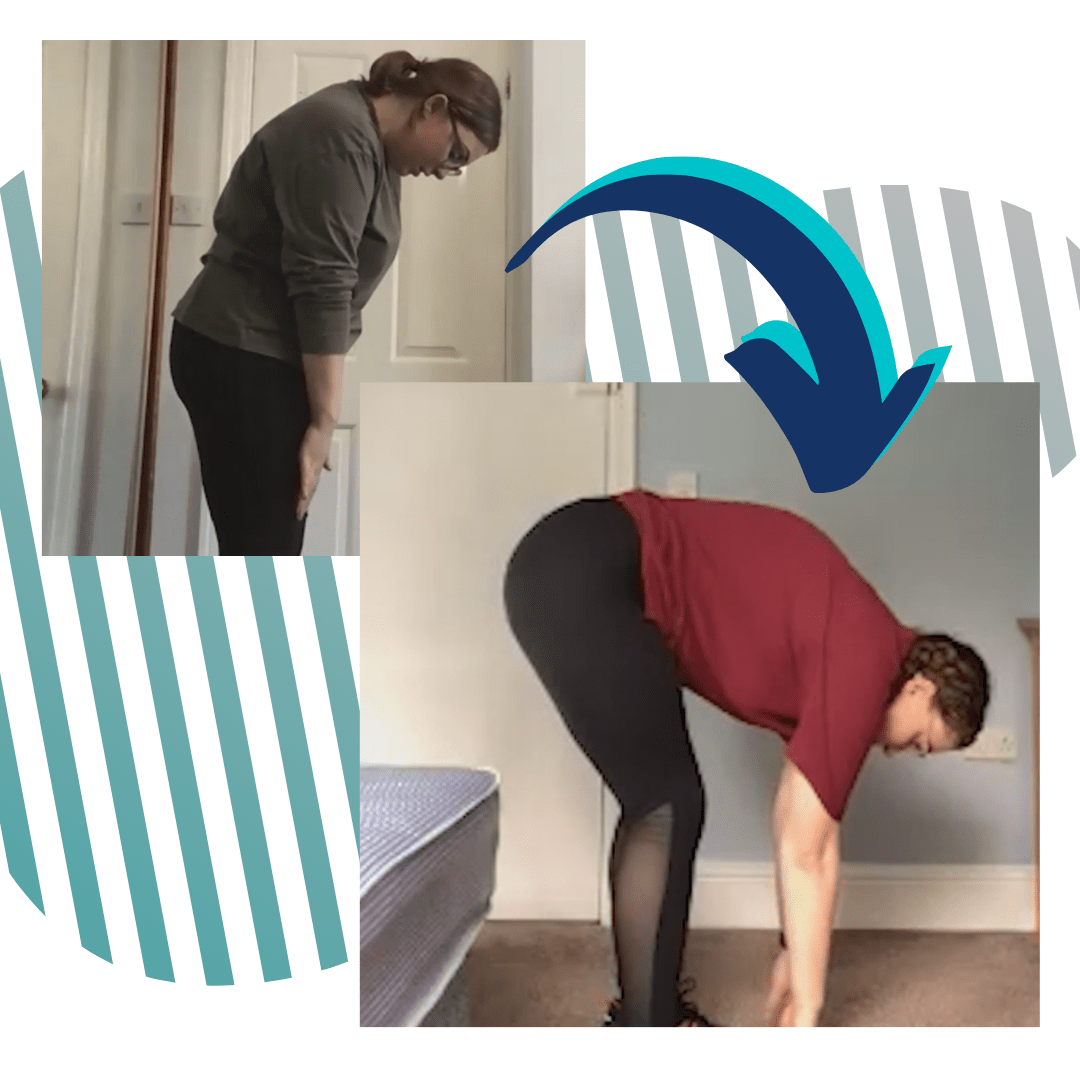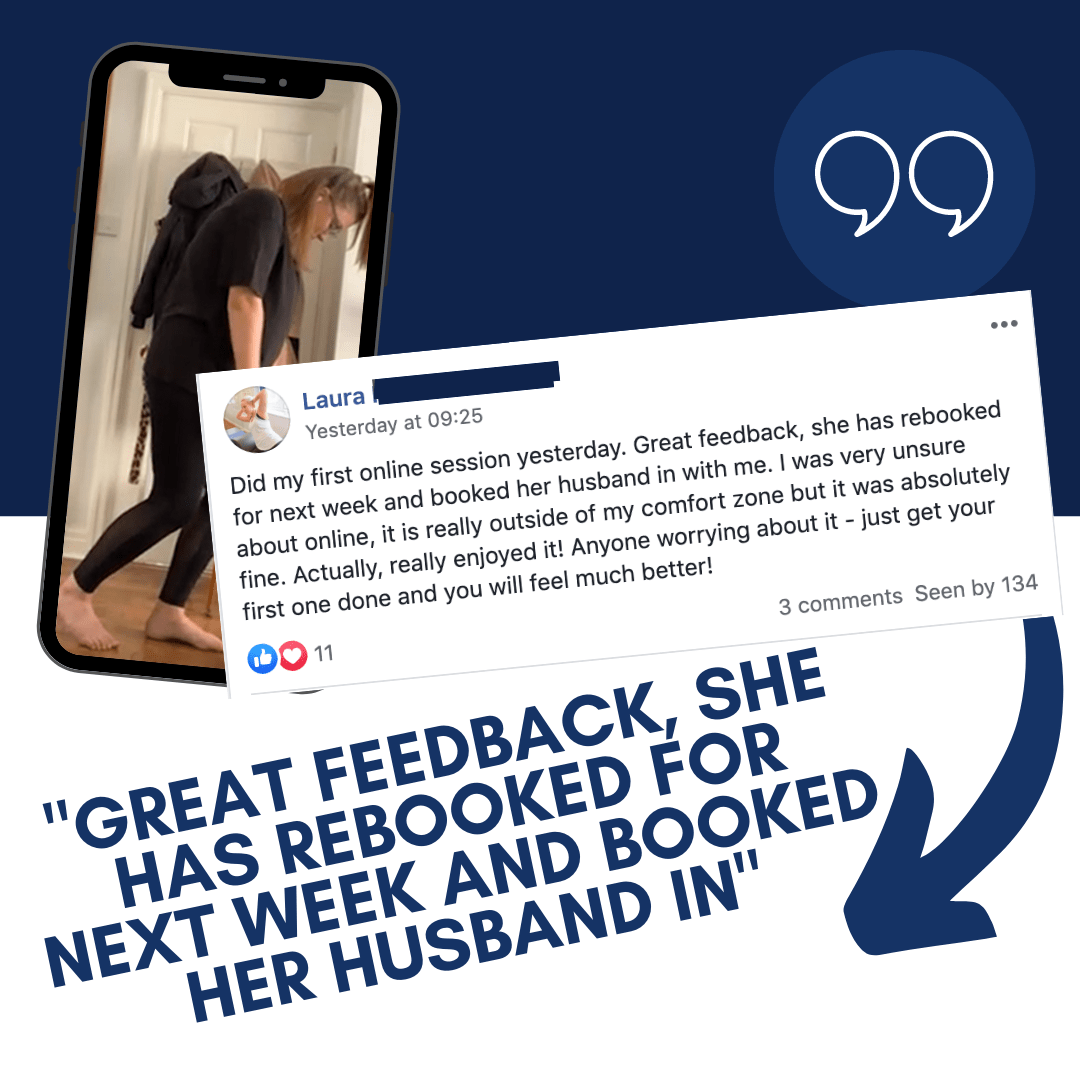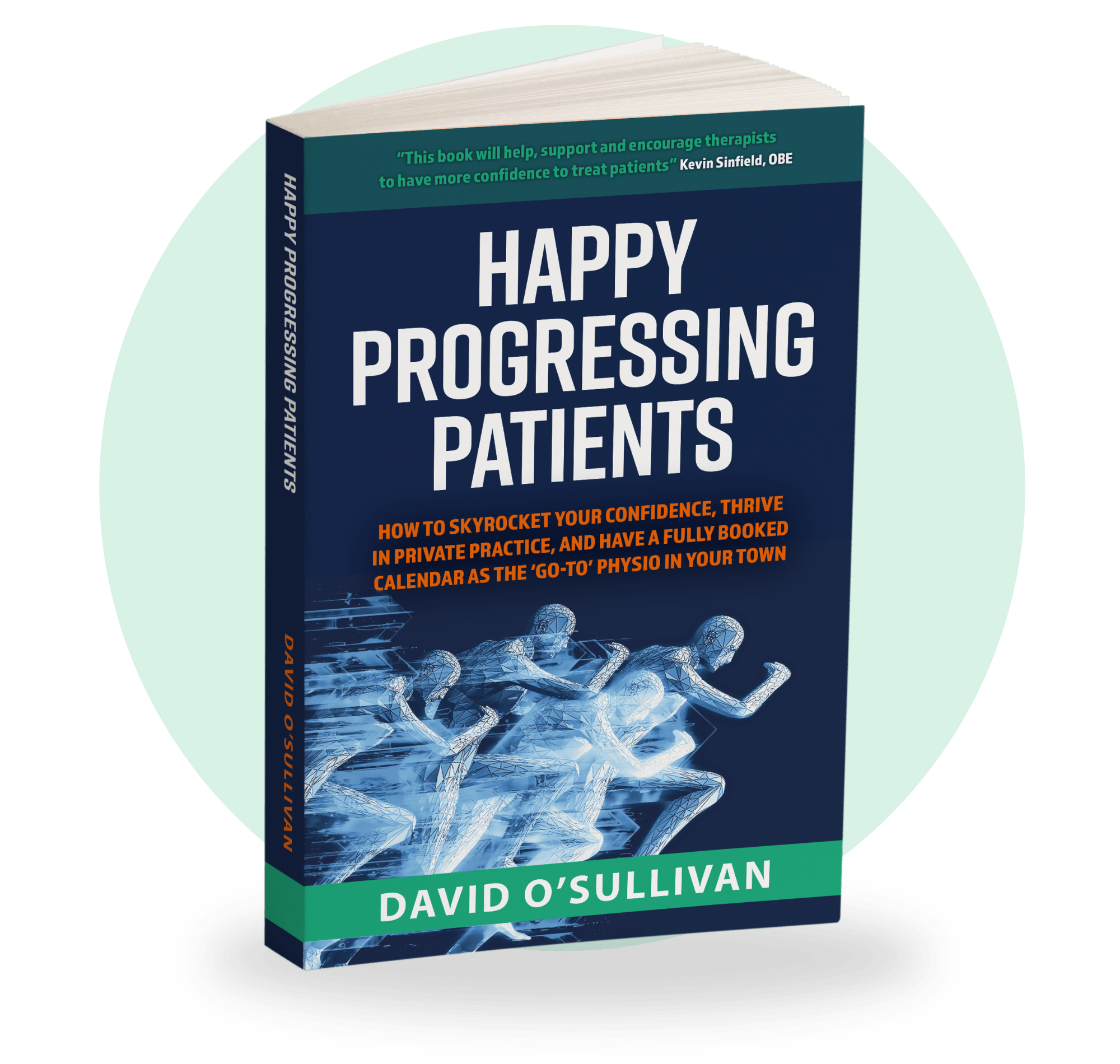
You have a structure in place for your face to face appointments, specifically your objective assessment.
But for online, it’s different.
What do you ask them during the session?
What do you get them to do?
How can you replicate this to relieve their pain without using your hands?
It’s easy to get overwhelmed via Telehealth.

You don’t feel confident that you’ll get the same great results as you would face to face…using your hands.
But, what happens if another lockdown happens?
What happens if the pandemic forces your clinic to close again…
Or, what if your patients just don’t feel safe enough to leave the door and come to your clinic?
That’s why it’s a MUST right now to mitigate your business and simplify the process so you feel completely confident you can achieve great results for your patients online….
…so they value the session and you have no mindset problems charging your full price for what you’re worth?
Here’s how I look at these types of presentations…
Let’s say the patient gets their pain with extension based movements… and you notice when they extend, this brings the pain experience in their lower back region…
In the mentorship I teach the 80/20 rule of focusing 20% of time on the symptoms and 80% of our time on what’s not doing its job.
So when we simplify the movement of extension… what might not be doing its job that may be putting more pressure on the low back or facet joint for example?
Extend your lumbar spine in standing…the weight in your foot reacts and your weight to travel forwards… to manage your base of support and keep you balanced.
Is this happening?
If it’s not happening then you’re not using hip extension to achieve this movement and are using your low back a lot.
Why?
That completely depends on the person’s story, their injury history… and their current movement strategies.
Hint, it’s very rarely often due to weak glutes
Why does the nervous system not use this strategy anymore?
Is it trying to protect loading some tissues?
Just a new habit?

The answer to that question lies in the subjective assessment usually and the patient’s story.
Another thing you may notice is when the patient leans back, they may not elevate their ribcage…
You might see the patient lose height for example extending…
Try it yourself…
…don’t allow your ribcage to elevate as you extend your lumbar spine…
…versus exaggerating your ribcage elevation and notice when you reach end rage extension.
You’ll reach end range pretty quickly with a rib cage that doesn’t elevate.
A ribcage that doesn’t elevate will have implications for the pelvis also.
With this type of patient, we may choose to help the ribcage to elevate…
This would also help the abdominals to decelerate the forward momentum of the pelvis as the spine extends…
…and very often then we’ll eliminate that low back ‘pinch’ very quickly.
I see this all the time with rugby players.
How do you help the ribcage elevate more?
You’ve got a lot of options.
There is no right or wrong here.
Help the external obliques lengthen and go through a full range of motion via stretching, movement, whatever your tipple is…
Get the person to inhale slowly through the nose as they extend… and facilitate elevating the ribcage by pushing the diaphragm down…
The options are endless.
The point is once you focus your mind on what’s not doing its job and not all on the symptoms so many more options present themselves…
Once you get clarity on what peripheral tissues you may want to influence then the creativity can begin…
From my experience, it’s important then to take these tissues through a range of motion in a graded exposure manner… to ‘show’ the nervous system it’s safe to ‘tolerate load’ in meaningful movements for the patient.
Update the belief system… while giving the patient an opportunity to build confidence…
and self belief in meaningful positions.
It’s also important to consider the speed of movement the patient needs to be able to do things in real life.
But in summary, simplifying the objective assessment like this can empower you to feel confident performing assessments and treatments… without relying on your hands.
You can make big differences to peoples lives… without having to perform
mobilisations or even use your hands.
Keep it simple
Appreciate the iceberg analogy of the person and their nervous system…
How you are seeing the patient move now is half the picture.
There is a nervous system underneath the water so to speak driving this movement.
Build a working hypothesis
Test, treat, retest.
If you intervene and you improve the KPI, great, continue to load, if you maintain, that’s fine too.
Keep it simple at all times.
The more simple you keep things, the less overwhelmed you’ll become in assessments.
The more clarity you, the more confident you are to take action.
The more confident you are, the more belief your patient will have in you as a therapist.
It’s a win win.
Look at the person in front of you…
Link the subjective assessment to the objective assessment to make sense of the person’s story…
You can add a lot of value and make lasting changes to patients symptoms without your hands on a patient.
You can empower them to make meaningful lasting changes.
And that’s how over 500 therapists on my mentorship are thriving and growing their clinics during this chaotic world we’re living in right now
And if you wanna know how to do this yourself then claim your FREE spot on my webinar training called:
Click the link below to join me in 15 minutes!
/webinar-registration/
It’s completely free,
Just make sure you clear your diary for the next 2 hours as I’ve got a LOT that I need to share with you.
Seriously.
Just think, these next 2 hours could completely risk mitigate your clinic…that alone is worth it don’t you think?
Join me on this free training here.
See you online,
Dave

Get Your FREE Copy Of The Amazon #1 Bestseller That Holds The Secret To Confidently Treating Any Patient!
Download a Free ‘ebook’ copy of the 8-Step ‘World Cup’ Treatment Plan that helped my private patients achieve full recovery and made me a ‘go-to’ physio for complex cases…
